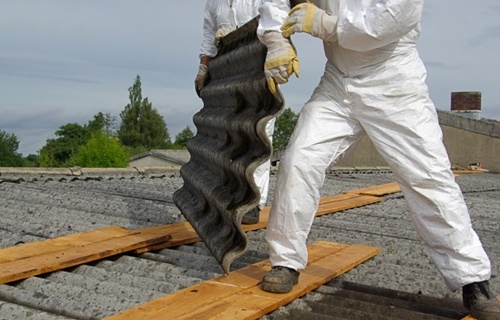How Do I Know If I Need Asbestos Removal?

The asbestos mineral was a cheap and abundant "miracle material" used by most industry branches until its negative impact on health became common knowledge. Due to its isolating properties and tensile strength, asbestos was widely used in construction and product manufacturing. If your house was built before 1980, there is over a 90% chance it has asbestos somewhere. You can find the most common household products likely to contain asbestos on our Home Asbestos Exposure page.
Asbestos is a highly carcinogenic agent, the cause of a wide range of health problems, like asbestosis, COPD, lung cancer, or mesothelioma. The tiny asbestos fibers can float in the air, stick to different surfaces and clothes, and be easily inhaled or swallowed. It is why there is no safe level of asbestos exposure, as health agencies agree worldwide.
All forms of asbestos tend to break when disturbed, releasing dangerous microscopic fibers into the air. It is key to hire a team of professionals who can adequately attend to asbestos in your home, as they underwent proper training and have experience in dealing with such a complex and dangerous job.
The most suitable person to ask whether the asbestos materials in your home need removal is a licensed contractor who can come to your house and conduct a careful and thorough inspection. Subsequently, they can tell you if the products in question pose a health risk and thereby require removal or if another asbestos control method is appropriate for your situation, such as encapsulation or encasement. If you're not sure whether asbestos is present in your home, we advise you to contact a professional asbestos testing company or to send a sample of the suspect material/s to a certified laboratory for analysis. We've compiled a list of the best asbestos testing companies for each U.S. state from which you can choose.
Nevertheless, when it comes to small areas of the house, you can successfully remove asbestos as long as you take serious precautions. Therefore, you can discard products such as pipe insulation, vinyl floor tiles, and corrugated roofing sheets by yourself in a relatively safe way. We have provided a short guide for DIY asbestos removal, which we highly encourage you to comply with if you opt for disposing of hazardous materials on your own. For work covering large spaces and asbestos removal required before significant remodeling or renovation projects, we strongly recommend hiring a team of licensed professionals.
Asbestos removal is rarely necessary when most products are in good condition. Still, it is better to have the following materials disposed of by a professional company, especially if they show wear or tear since they break easily and imply a high risk of exposure:
- pipe lagging
- boiler insulation
- fire retardant material on steelwork
- insulation on electrical wires
- sprayed insulation (such as the ceiling treatment popularly known as popcorn ceiling)
- the lining of stoves, heaters, and hot water systems
- vermiculite attic insulation
- insulation board on walls
- roofing felt
- doors and gaskets on furnaces and wood stoves
- plumbing putty
- fuse-box lining
- acoustical and decorative plaster
- mastic adhesives
- spackle or patching compound
- caulking
- block insulation
- millboard or roll board
- artificial ashes and embers
When asbestos materials such as asphalt, roofing shingles, and cement siding are severely damaged by human action or weathering, they also become a source of exposure, meaning removal might be necessary. Similarly, only a certified asbestos inspector can know whether these products require removal or another control method. Nevertheless, most asbestos materials can be successfully managed by using abatement methods that prevent harmful fibers from escaping the matrix of the product.
